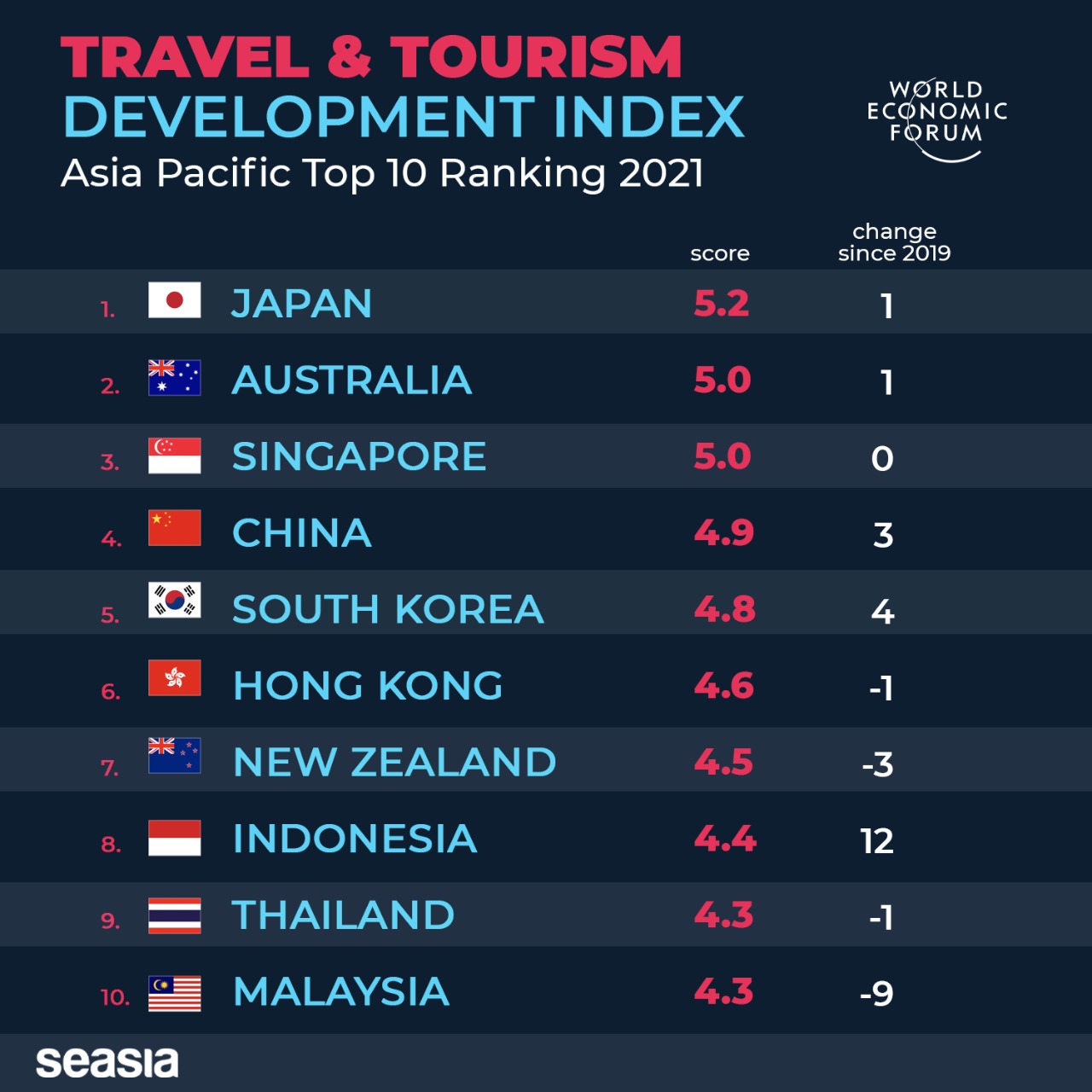World Economic Forum published “Travel & Tourism Development Index 2021: Rebuilding for a Sustainable and Resilient Future”.
The Travel & Tourism Development Index 2021, which assesses 117 nations, examines the characteristics and regulations that support the travel and tourism (T&T) industry's sustainable and resilient growth, which in turn helps a nation's development.
In order to assist the growth of the travel and tourist industry in a sustainable and resilient manner, the Travel & Tourism Development Index examines a variety of factors and policies.

It is composed of five sub-indices that span 117 nations and include a range of important issues for the industry, including infrastructure, environmental sustainability, travel and tourism priority setting, safety, and more.
Following a significant decline in 2020 due to the coronavirus (COVID-19) pandemic, the total contribution of travel and tourism to the global gross domestic product (GDP) increased in 2021 compared to the previous year.
The total contribution of this industry to the global GDP in 2021 was 5.81 trillion US dollars, up 21.7 percent from 2020 but still below the high seen in 2019.
The number of travel and tourism jobs also followed a similar pattern globally. It dramatically decreased in the first year of the health crisis, then increased in 2021 but fell short of pre-pandemic levels.
Global COVID-19 effect on foreign tourism arrivals. 2020 saw the start of the COVID-19 pandemic, and nations all around the world implemented emergency measures prohibiting unnecessary travel.
The global number of international visitor visits fell precipitously that year as a result of the health issue and at its lowest level since 1989.
With approximately 421 million foreign visitors in 2021, this situation improves. However, less than 30% of the volume recorded in 2019 was represented by this statistic.
The ranking's second-best performer is the Asia-Pacific area. Twelve of the 20 economies that make up the economy score higher than the TTDI average, and 13 have increased their score since 2019.
The area is vast and varied. The best combinations of natural, cultural, and non-leisure resources may be found here, however environmental sustainability issues put its lead in the former at risk.
Many of the more advanced economies in Asia Pacific have world-class infrastructure for transportation, tourism, healthcare, and information and communications technology (ICT), high levels of international openness and T&T investment, favorable business environments, excellent socioeconomic resilience performance, and skilled and productive workforces.
However, the region's less developed economies' advantage in price competitiveness and its wealth of natural resources are frequently compensated by deficiencies in the aforementioned elements, including tourist, healthcare, and ICT infrastructure, global openness, and socioeconomic resilience.
These gaps are, however, starting to close a little bit as lower-middle-income economies in Asia Pacific have improved, with particularly strong growth in areas like ICT readiness.
Source: weforum.org


















